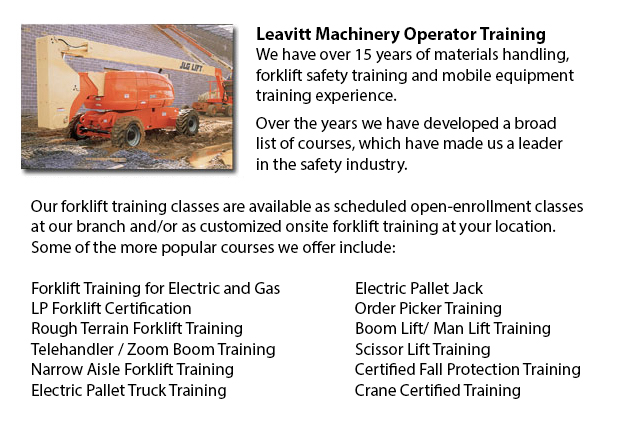
Ottawa Boom Lift Certification - Elevated work platforms allow work and maintenance operations to be done at levels that could not be reached by whichever other way. Boom Lift Certification Training educates workers regarding the safe operation of scissor lifts and boom lifts.
Despite the range in lift style, applications and site conditions, all lifts have the potential for death or serious injury when not safely operated. Falls, electrocution, crushed body parts, and tip-overs can be the tragic result of wrong operating procedures.
To be able to prevent aerial lift incidents, boom lift operators should be trained by workers who are qualified in safely operating the particular kind of aerial lift they will be utilizing. Aerial lifts must never be altered without the express permission of other recognized entity or the manufacturer. If you are leasing a lift, ensure that it is correctly maintained. Before using, safety devices and controls need to be checked to ensure they are working properly.
Operational safety procedures are vital in avoiding incidents. Operators must not drive an aerial lift with the lift extended (although some are designed to be driven with the lift extended). Always set brakes. Set outriggers, if available. Avoid slopes, but when needed make use of wheel chocks on slopes that do not go beyond the manufacturer's slope limits. Adhere to manufacturer's load and weight limits. When standing on the boom lift's platform, utilize full-body harnesses or a safety belt with a two-foot lanyard tied to the basket or boom. Fall protection is not needed for scissor lifts that have guardrails. Do not climb or sit on guardrails.
This course consists of the following topics: safety guidelines to prevent a tip-over; training and certification; slopes and surface conditions; inspecting the travel path & work area; other tips for maintaining stability; stability factors; leverage; weight capacity; pre-operational inspection; testing control functions; mounting a motor vehicle; safe operating practices; safe driving procedures; overhead obstacles and power lines; making use of lanyards and harness; PPE and fall protection; and avoiding falls from the platform.
The trainee who is successful will know the following: training and authorization procedures; pre-operational check procedures; how to avoid tip-overs; factors affecting the stability of boom and scissor lifts; how to use PPE, how to utilize the testing control functions and strategies to avoid falls.
-
Ottawa Boom Lift Ticket
Ottawa Boom Lift Ticket - Boom Lifts are a table lift piece of equipment which could be lifted or lowered to varying heights, making this apparatus a useful tool for many manufacturing purposes. There are some unique types of Boom Lift consisting of... More -
Ottawa Boom Lift Operator Training
Ottawa Boom Lift Operator Training - The cherry picker work platform is a kind of work platform, which will typically have a bucket or platform at the hydraulic lifting system's end. The device is also referred to as a man lift, boom lift, basket cra... More -
Aerial Lift / Boom Lift / Man Lift / Scissor Lift Training in Ottawa
Scissor lifts are forklift tables which raise objects and people and supplies vertically. They are normally utilized in industrial, construction and commercial environments. A common use of scissor lifts is for lifting or lowering construction suppli... More -
Ottawa Crane Certification
Ottawa Crane Certification - The Crane Certification training program covers content suggested by industry concerning the safe and efficient operation of cranes. Individuals training would know the following: pre-operational, operational and post ope... More -
Ottawa Heavy Equipment Training Courses
Ottawa Heavy Equipment Training Courses - The first step required to take when selecting heavy equipment operator courses is determining the capacity you wish to work with heavy machinery. Like for example, you can take courses that will teach you ho... More -
Ottawa Fall Protection Ticket
Ottawa Fall Protection Ticket - Fall-related accidents are the number one reason of death in the construction trade. The potential for fall accidents very much increases based on the kind of work which is being completed within your workplace. So, be... More -
Ottawa Telehandler Operator Training
Ottawa Telehandler Operator Training - Telescopic handler Forklifts or telehandler forklifts are common industrial machinery seen in various construction business settings. The telehandler is a useful machine and makes for a valuable tool that can be... More -
Fall Protection Training in Ottawa
Regrettably, there is a large number of workplace injuries linked to falling and lots of fall-related deaths reported each year. Lots of these instances might have been prevented by having proper measures in place, offering proper training and equipp... More

Forklift Certification Ottawa
TOLL FREE: 1-888-254-6157
Ottawa, Ontario
forkliftcertificationottawa.com
Email Us
About Us


